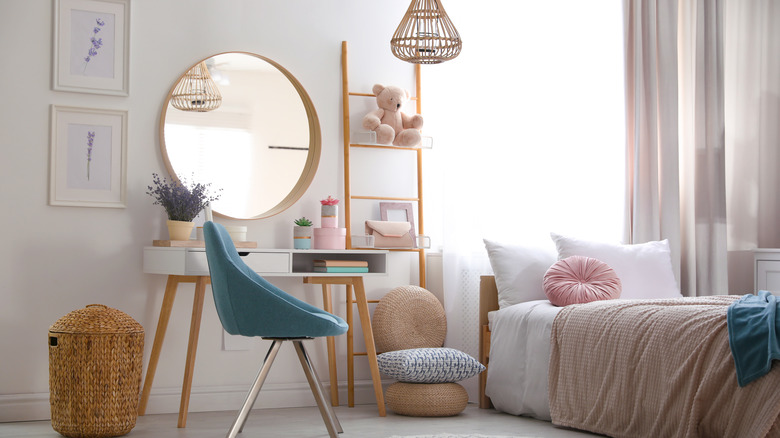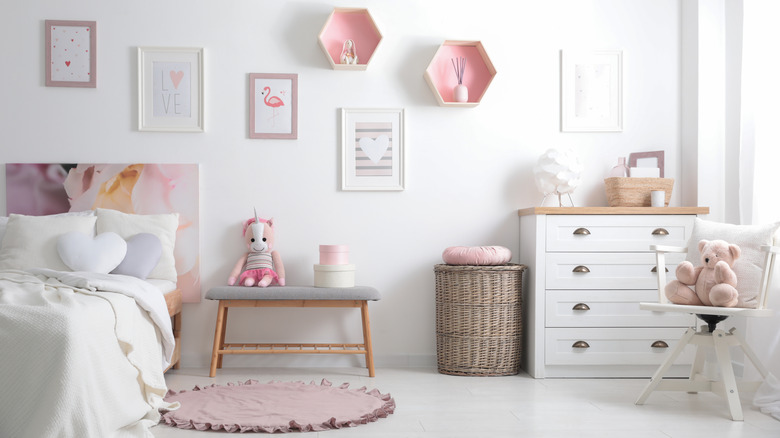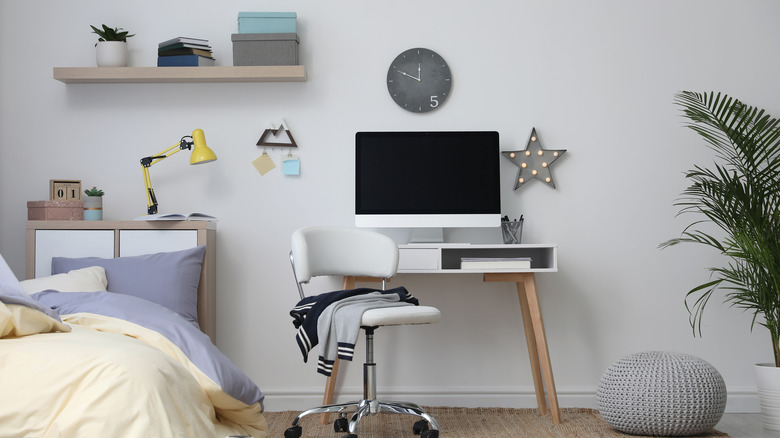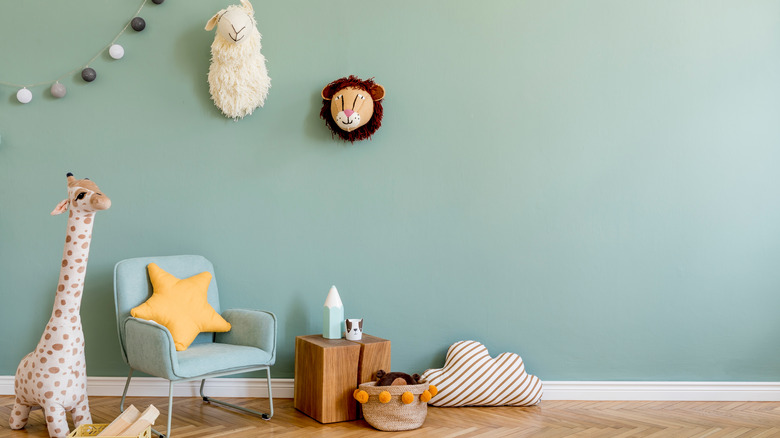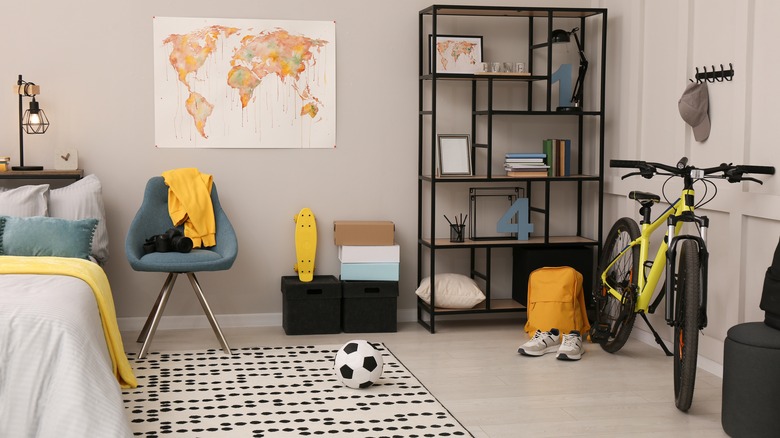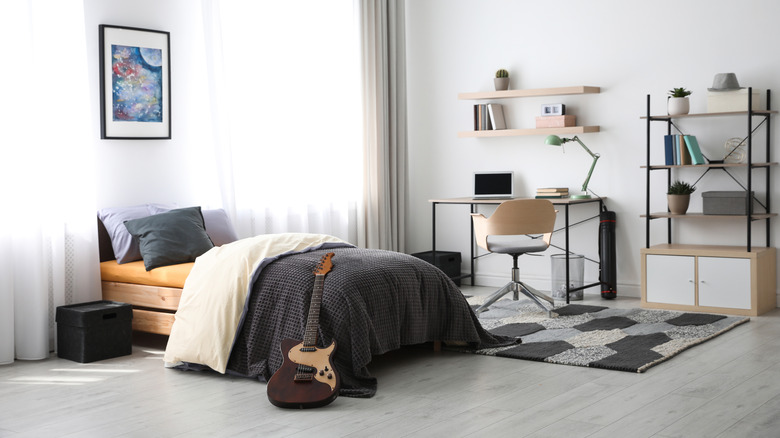How To Feng Shui Your Kid's Bedroom
Inspired by Taoist philosophies, the ancient Chinese art of feng shui has been helping homeowners all over the world achieve their design goals and keep up with popular trends. And while there are many components to feng shui, the discipline overall can be separated into three main principles: all-encompassing energy known as chi, an eight-sided energy map known as the bagua, and the five natural elements.
Through the use of these principles, homeowners have been able to harness and harmonize the energy in their houses and create peaceful and prosperous environments, according to National Geographic. However, for those people who have yet to use feng shui in their home and are looking for a way to use it, one of the first places you should start is with the bedrooms.
Considered to be the most important room by Interismo, applying discipline to your home's bedrooms can be beneficial for not only you but your entire family, especially your children. No matter their age, the centuries-old practice can help foster a positive and nurturing environment for your child to grow up in. But how do you go about applying feng shui to their rooms?
It's all about bed positioning
From easing your child's nerves to helping them sleep, figuring out the right place for their bed can be an important part of applying feng shui to their bedroom. To do so, start by determining the location of the room's commanding position, which is often found against a stable wall and slightly diagonal from the main door, which is where energy flows into the room.
By utilizing the commanding position, you're allowing your child to have a greater sense of security and control in their space by giving them the ability to see who is coming into the room (via Cleanipedia). The position can also help your child feel safer on their own as the wall behind their bed can give them a sense of protection.
If their room doesn't have a clear, commanding position or the best bed positioning is in front of a window, make sure your child has a sturdy, wooden headboard that can act as a protective wall. According to Marie Burgos Design, you should also avoid hanging anything bulky over the bed or storing anything underneath it as they both can restrict the room's energy flow and cause restless sleep.
Clear out the clutter
While handling any kind of a mess may seem like a headache at first, getting rid of clutter is an essential part of feng shui (via Architectural Digest). When it comes to managing your child's untidiness, it may simply mean giving them plenty of storage space for their belongings and regularly getting rid of damaged toys and clothes that no longer fit them.
Suppose their toy collection continues to feel excessive to you. In that case, you can also try periodically cycling out them so that your child doesn't have an overwhelming amount at one time. This way, storing also becomes more manageable. This strategy will also ensure that your child plays with all of their toys rather than just their favorites.
As for the toys themselves, keep in mind that plastic is believed to negatively affect a room's energy and can even cause creative blocks, so try to pick out plastic-free playthings made from one of the five natural elements instead. You should also make sure they aren't stored in plastic bins and are accessible to your child as it can get them into the habit of cleaning up after themselves, as per Marie Burgos Design.
Pick the right colors
Because of its importance, bedrooms should generally be spacious, well-lit, and emphasize calming energy through the use of soft, neutral colors and plants (via Mindbodygreen). In terms of applying feng shui to a child's room, using different colors may seem like a great way to express creativity, but picking the right hues can be essential to establishing positive energy in their room.
In particular, Marie Burgos Design recommends going for a white or pastel color for their walls instead of bold and energetic tints like black, dark blue, and red, which can attract negative energy. And although white may seem like an unconventional choice for a child's bedroom, according to the bagua energy map, it is representative of children and creativity, so be sure to incorporate it in some way if you don't use it on the walls.
Along with utilizing white, make sure you decorate your child's bedroom with colorful, uplifting, and positive messages to increase the good vibes in their space. You can also use a combination of feng shui's five natural elements — wood, fire, metal, earth, and water — to balance out any remaining negative or stagnant energy in the room.
The importance of closets
Along with giving your child plenty of storage options for their things and increasing the positive energy flow in their bedroom, you can also use the ancient practice to organize smaller storage spaces like closets and bookcases. In particular, closets are believed to be filled with intention and vitality, so if they're left packed and disorganized, the stagnant energy can disrupt your child's sleep (via Metropolitan Organizing).
The location of their closet can also affect certain portions of the room's bagua map, so keeping it well maintained may help with friendships, health, and creativeness, according to Love to Know. Metropolitan Organizing also recommends installing a system in your child's closet to keep it organized, but make sure it can be adjusted and customized to their needs as they age.
Once you've determined the best way to about organizing your child's closet and get rid of any of their unnecessary and useless clothes, you can start adding their belongings back into their wardrobe. To do so, you can pick some baskets and bins in their favorite color to personalize them and organize their clothing items in bagua-related categories or by color and type (via California Closets).
Make it adaptable
While feng shui tends to be more minimalist, there is still room for customization, especially when using it in a child's bedroom. Because the bedroom will change with them as they grow up, make sure the space is adaptable and accommodates their interests, Love to Know recommends. One way to go about this is by including them in the decorating process as much as possible.
Despite being somewhat reliant on age, involving them in this process will give them a sense of control over the space, the ability to express themselves, and develop some confidence in their decisions. You should also keep in mind that kids' rooms are multipurpose spaces, so make sure there is a clear separation between a creative area, a workspace, and a rest zone in their room.
For the workspace, in particular, Red Lotus Letter recommends situating it in the northeast corner or in the portion of the room that falls in the knowledge and self-cultivation section of the bagua map. This space should be bright and free of clutter and electronics, as the room is still a bedroom, and fostering calming energy should be your main priority.
